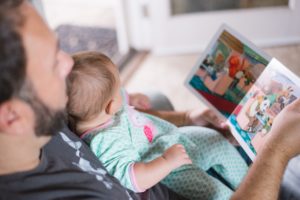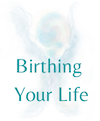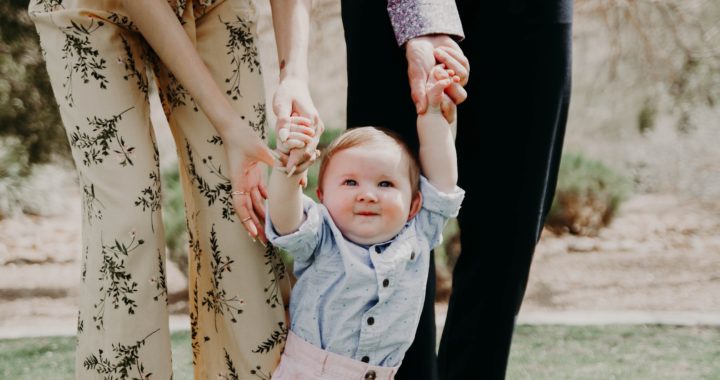The first section of this blog post is an excerpt from the book I am writing, whose working title is Spirit into Form: Exploring Embryological Potential and Prenatal Psychology (hopefully to be published soon!)
“When all the layers of support are there for a family, the family hums. Support the mother, support the baby. Have two layers of support for the mother, and two layers of support for the baby, and make room for mom to get her needs met.”
– Ray Castellino, in White, 2013, p. 272
We all need support. Babies cannot survive without it. We are designed to come into life supported by fields within fields of support, multiple layers which we explore in this chapter.
Within the womb little ones are suspended between two fluid sacs, the yolk sac and the amniotic sac, layers of support suspended within a larger chorionic sac. We grow within fluid fields surrounded by vaster fields. These include not only physical fields supporting the embryo and fetus (as it is called by 8 weeks after conception) but also larger familial, social, psychological and energetic fields. Babies enter not only mother’s womb but also her world, which they prepare prenatally to birth into.
 Many cultures living close to nature acknowledge our mother is not our only mother. The earth is also our mother, suspended within a cosmos we can only begin to imagine. Like the prenate dependent on mother, humans throughout life feed from our earth, which depends on influences from the cosmos. Composed of stardust, we are one with the entire cosmos.
Many cultures living close to nature acknowledge our mother is not our only mother. The earth is also our mother, suspended within a cosmos we can only begin to imagine. Like the prenate dependent on mother, humans throughout life feed from our earth, which depends on influences from the cosmos. Composed of stardust, we are one with the entire cosmos.
“The environment is not merely the place where we live and act, for the biosphere is the ground from which and within which we arise. The earth is not only our home, it is our mother. In fact, our relationship is even more intimate, because we can never cut the umbilical cord. The air in my lungs, like the water and food that pass through my mouth, is part of a great system that does not stop with me but continually circulates through me. My life is a dissipative process that depends upon and contributes to that never-ending circulation.” (Loy, 2012)
This connection is also true for the fetus before the umbilical cord is cut. Our life in the womb is a microcosm of life after birth. Prenatally, our mother “is the ground from which and within which we arise” (ibid).
Echoes of the Womb: Layers of Support Throughout Life
 The nature and degree of support available when we are conceived and developing in the womb as well as after birth contribute dramatically to our relationship to support throughout life. How do I perceive and receive support in my life now? The answer to this question is likely to relate to how supported my mother perceived herself to be when I was in her womb.
The nature and degree of support available when we are conceived and developing in the womb as well as after birth contribute dramatically to our relationship to support throughout life. How do I perceive and receive support in my life now? The answer to this question is likely to relate to how supported my mother perceived herself to be when I was in her womb.
This makes sense when we consider that the little one in the womb is intelligently preparing to enter into the mother’s world. Where mother feels threatened, alone, needing to defend herself, stressed or unloved, little one prepares a body with a nervous system extra sensitive to stress and the likelihood of attack. A mother who perceives herself to be safe, loved and supported by partner, family, friends, doula, midwife or other practitioners, as well as by good food, a pleasant, calming environment, stable home, etc. is more likely to birth a baby who is more readily soothed, curious, eager and able to learn, to socialise and to be physically and emotionally healthy.
Our experience, perception and beliefs about support are reflected in every area of our lives. How well we digest our food relates to how much support we can receive from it. Our relationship to money often relates to how abundantly we experienced being nourished via the umbilical cord as well as after birth.

Who do we spend time with? Do we tend to be attracted to and to attract friends, colleagues, neighbours and health/therapy practitioners who are available to support us when needed? Or do we find ourselves always feeling like we need to defend ourselves, hide our true feelings or our vulnerability, or do it all ourselves? Or do we protect ourselves from potential hurt or disappointment by focusing on taking care of others?
These are important and useful questions to be asking ourselves and wondering about where or how we may have learned to live this way. How did our ancestors relate to support, including mother, father, grandparents and beyond? What is our cultural context for support?

Cultural Layers
In my work with prenatal and birth therapy I rarely encounter anyone who feels they or their mother had adequate support during the pregnancy. When we recognise the challenges faced by their mother or parents often their relationship with support begins to shift. Acknowledging cultural influences can further enhance the possibility of shifting pain, resentment and shame to compassion, both for self and for parents and others who may have been present back then.
 Our modern western culture does not value interpersonal support. Adults are supposed to be independent and capable of functioning on their own. Couples or families tend to live isolated from others in their own house or apartment. The support of extended family is largely forgotten as other family members live too far away or have their own struggles to attend to. Too often there is conflict between family members and they no longer want to be near each other. Friends may also live far away. On top of this culturally promoted isolation and independence interfering with our ability to experience support, often we learn early on that it is not useful, acceptable or safe to acknowledge and state our needs.
Our modern western culture does not value interpersonal support. Adults are supposed to be independent and capable of functioning on their own. Couples or families tend to live isolated from others in their own house or apartment. The support of extended family is largely forgotten as other family members live too far away or have their own struggles to attend to. Too often there is conflict between family members and they no longer want to be near each other. Friends may also live far away. On top of this culturally promoted isolation and independence interfering with our ability to experience support, often we learn early on that it is not useful, acceptable or safe to acknowledge and state our needs.
Supervision as a Layer of Support
As a Craniosacral Therapist, I have been painfully aware of the cultural tendencies reflected in a lack of modelling for support often involved in both training and practice. Although our work in Biodynamics is all about resting into fields within fields within fields of support that we call the Breath of Life, many practitioners are unaware that in order to fully rest into these fields they also need human support. Supervision provides an extra layer of support for practitioners that is not only a practical source for clarifying questions or issues that arise within session work, but also energetic.
Like the embryo suspended within its fluid sacs, the practitioner can rest more fully when they have a well-established, safe relationship with a supervisor with whom they know they can safely talk with about anything arising for them in their work. I have so often heard supervisees express amazement at how a major issue completely disappeared with their client after talking about it in supervision!
Again, we all need support. Whether you are a practitioner, a parent, or just a person, you need support! The more layers of support you can manifest for yourself, I suspect the happier, healthier and more at ease you will be. I wish this for you.









Hello Cherionna, I’m always glad to see your posts and pictures on FB, I do not navigate that site very well, thank you for all you offer
I have a growing BCST practice thanks to my time spent with you and Franklyn
Hi Jeffrey, Thanks for your kind comment. I’m so glad your BCST practice has been thriving although I imagine it might be quiet for awhile in the midst of COVID-19! I don’t know if you are aware of my Facebook Live event today at 5:30 p.m. UK time (12:30 p.m. EST). It’s a short Continuum exploration to support us in being more settled, fluid and resilient in these challenging times. You can find it on our Resourcing Your Life Facebook page.
Thanks for writing this Cherionna. Much appreciated!
Many thanks for your appreciation Kate!